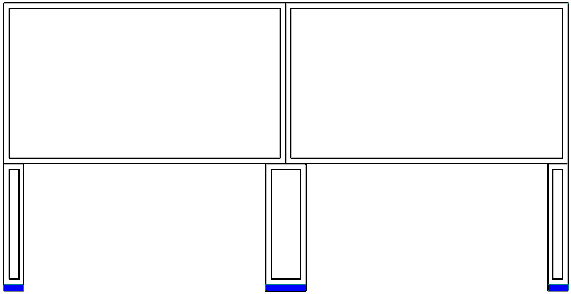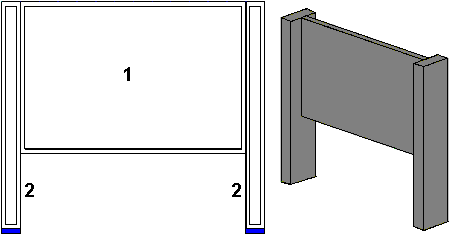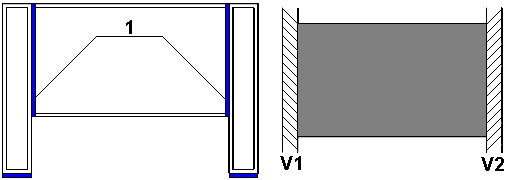In a FEM modeled structure, exact modeling of boundary support conditions is a very significant issue in regards to the reliability of obtained results. Support columns are modeled as plane stress panels with dimensions corresponding to real user defined support dimensions. Such an approach reflects the real work of a structure (displacements of supports may affect the results for the membrane, for example). It is assumed that there are fixed supports on the bottom edges of modeled columns.
Three support types may be defined.
- Pinned support on columns.
- Pilaster.
- Fixed support.
A model of a two-span deep-beam that is supported on columns is shown below. For the pinned support on columns, the thickness of columns is adopted as equal to the thickness of the deep-beam panel.

Pilasters are columns of a thickness greater than that of the membrane which is fixed to them. It is assumed that these supports extend over the entire height of a deep-beam. When a pilaster is modeled, its thickness perpendicular to the membrane plane is additionally defined. The following designations are adopted in the drawing below.
1 - Panel of the thickness defined as the deep-beam thickness.
2 - Panels of the thickness defined as the pilaster thickness.

The program also offers the possibility of modeling a membrane fixed by infinitely rigid elements (suspension of a membrane on perpendicular walls of large stiffness or very rigid pilasters). In such cases, it is assumed that there is a fixed support along a selected vertical edge of a deep-beam (see the drawing below). The following designations are adopted: 1 - fixed supports.
